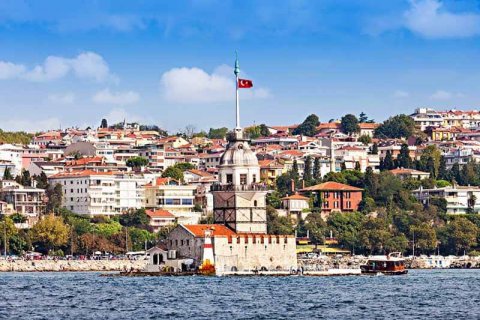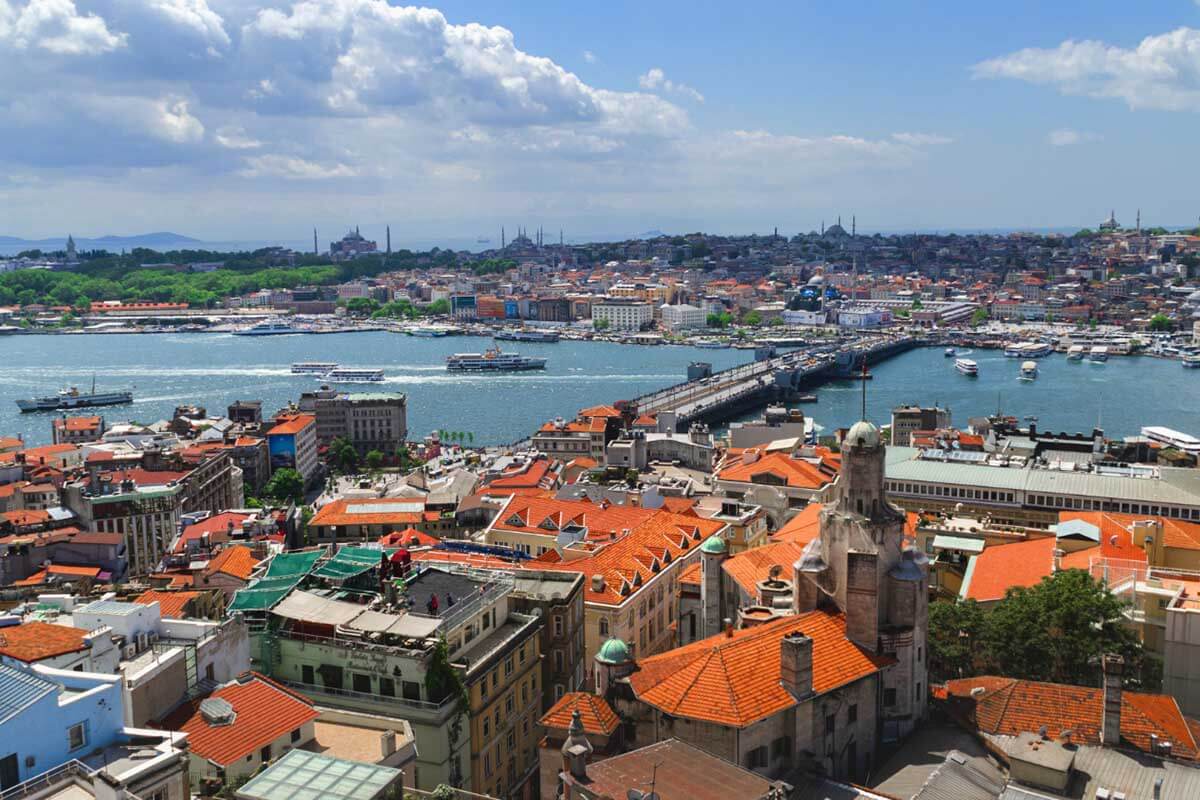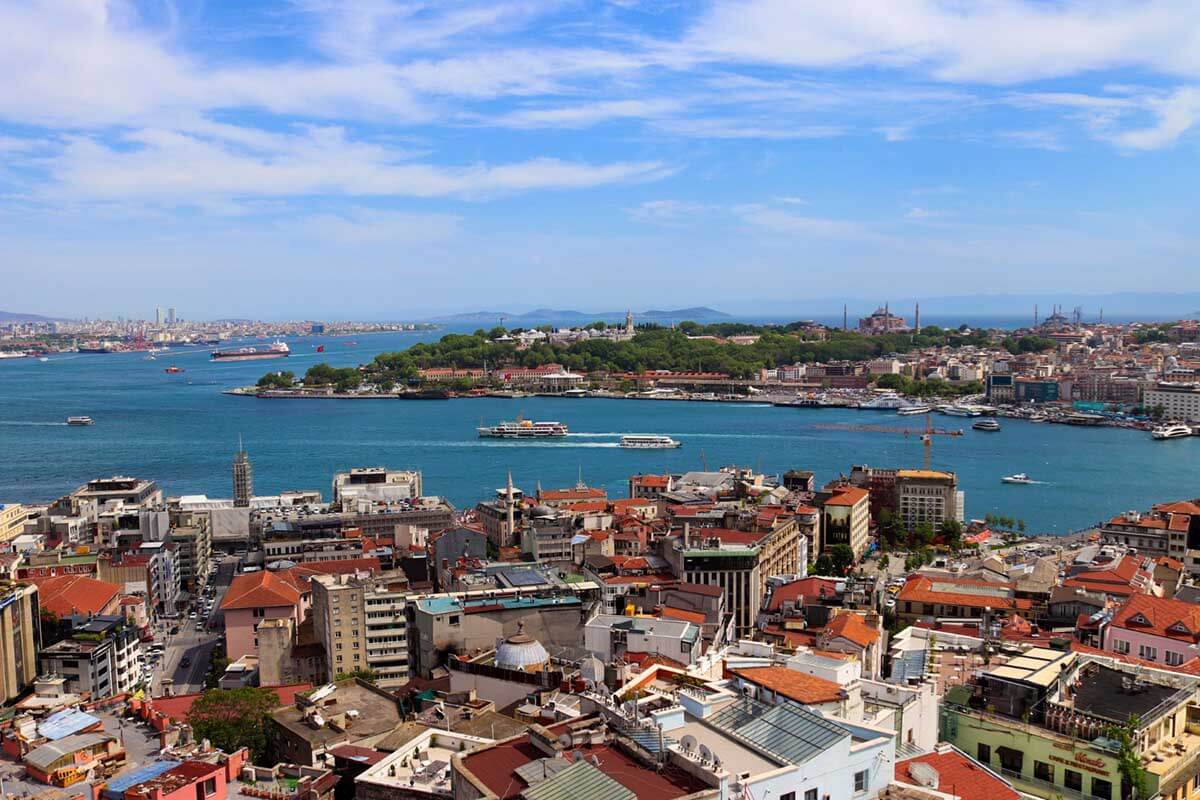
In autumn, Turkish real estate market experts said that if someone was looking for housing, it was the best time to purchase. Even though there are new development projects, there still aren't as many as pre-pandemic. The cost of construction is getting higher and these extra expenses also fall on the shoulders of potential buyers. By winter, both sales and rental prices for apartments are guaranteed to rise even more.
For anyone in doubt, we recommend looking in a direction where properties won't be idle. This is true for Istanbul.
Content:
- In 50 districts in Istanbul, rent has grown by more than 50% in the last year
- The highest growth
- Top-5 locations with affordable prices per 1 square meter
- Useful articles
It's true that for a long time, the metropolis has been considered expensive in terms of buying real estate. But, the city isn't just a financial, economic, and tourist center, local apartments are also rented out all year without any problems. Also, unlike in some other cities, there's no need to make a decision "for the long term" about whether to rent out your property on a yearly, weekly or daily basis to tourists. Istanbul’s realities allow you to adapt to changing conditions. This means it's convenient to live in the existing housing on your own, visit for the holidays, and rent it out the rest of the time. So, even if the apartment is vacant for a few weeks, you can earn extra money. (If you choose the short-term lease option, you'll need to find a reliable partner. And be sure to talk to a lawyer because it's forbidden for a foreigner to do this without a licenced intermediary according to Turkish laws as Turk Estate notes).

If you buy your first apartment in Turkey, especially in Istanbul, in a good district and just to rent out, then in a few months or even less, rental payments will bring you enough funds to take out a mortgage on the next flat and rent out 2 apartments. Weeks and months slip by very quickly and the rent costs add up to an attractive figure.
Especially because Istanbul is a city where there's a large rental problem and even more so after a year and a half of a pandemic.
Let's keep in mind that white-collar workers have returned to the metropolis. Now, remote specialists have moved back to offices so they need to live somewhere. Students who returned to full-time study also need a roof over their heads. The decision to return from “online” to “offline” educational processes happened quite spontaneously. Also keep in mind that in September, there were 6 students per room in Istanbul dormitories. But the city has a lot of universities and almost 600.000 students from 56 universities and colleges are non-residents. And the number of beds in public and private hostels barely reaches 100,000.
Local landlords (Turkish citizens) take advantage of the fact that demand is quite a lot more than supply so they ask for unrealistic rental amounts. This is usually for the monthly rental rate and advance payments of 4-6 months in advance. So, some families are forced to withdraw students from colleges and institutes, disrupting their studies because they can't provide them with rented accommodation and food.
Basically, in Istanbul, the rush demand for student accommodation has reached its peak, and this includes the rest of the visitors. 35.5% of respondents in the Istanbul Barometer (a survey by the Istanbul Planning Agency İstanbul Planlama Ajansı or İPA) are worried about the problem of not being able to find a place to rent for at least a decent rent cost, let alone "good" rental expenses. According to the survey, the level of concern about this is the same as about the consequences of the pandemic.
Now, rental offers that are slightly lower in price than the standard rate will look very lucrative (it's not prohibited by law).
In the metropolis, even the most low-demand apartments are being rented. Recently, the media published tenants' complaints about a desolate and stove-heated room in Sultangazi in an old and tough house where the homeowners raised the rent from 850 to 1,250 Turkish liras (TL) over the past year.
It's already very difficult to find an apartment for rent less than 2,500-3,000 TL and for new contracts, prices are recalculated with an increase not just every month but every week. So you don't have to worry about allegedly vacant real estate.
As for the lease dynamics, the rental rate in Istanbul increased by 8.4% compared to the previous month alone. For the year, the average growth in rental rates ranged from 30% to 70% depending on the area.
The rapid growth of rent meant that the return on investments (ROI) accelerated. In Istanbul previously, it took at least 25 years for the payback of purchased housing. The ROI was reduced to 21 years in a very short time. It takes even less time in some areas. For example, it now takes only 184 months (15.3 years) in Esenyurt.
So, the payback period for real estate in Istanbul is close to the rate of popular resort provinces. Property owners couldn't even dream about this a few years ago.
In a recent report, the Bahcesehir University Center for Economic and Social Research (BETAM) analysed rental information in Istanbul districts. The highest rent growth was in Beykoz and the lowest in Bayrampaşa.
At the moment, Sarıyer is the most expensive district for renting out properties and Sultanbeyli is the most budget-friendly.
Rents rose the most in the following districts:
- Beykoz: +92.6%;
- Sariyer: +86%;
- Tuzla: +86.8%;
- Maltepe: +84.5%
- Ataşehir: +80.9%.
The least expensive housing is in:
- Bayrampaşa: +27.6%
- Eyüpsultan: +33.3%;
- Esenler: +33.7%;
- Güngören: +38.9%.
A little bit earlier, a report was published on the specialized Internet platform Hepsi Real Estate. It looks at the real estate market. This report is slightly less relevant because it was done at the end of the summer. But it's quite detailed and interesting as it show statistics about smaller areas (like neighbourhoods).
In 50 districts in Istanbul, rent has grown by more than 50% in the last year
| District (the area in which it appeared) | Results of July 2020, average cost per 1 sq. m. in rented units of housing | Results of July 2021, average cost per 1 sq. m. in rented units of housing | Annual changes in value, % | |
|---|---|---|---|---|
| 1. | Rumeli Hisarı (Sarıyer) | 39 TL | 153 TL | 290.0 |
| 2. | Vişnezade (Beşiktaş) | 37 TL | 125 TL | 238.5 |
| 3. | Reşitpaşa (Sarıyer) | 27 TL | 86 TL | 218.3 |
| 4. | Gayrettepe (Beşiktaş) | 34 TL | 93 TL | 171.1 |
| 5. | Fikirtepe (Kadıköy) | 20 TL | 50 TL | 150.0 |
| 6. | 19 Mayıs (Kadıköy) | 21 TL | 51 TL | 145.3 |
| 7. | Seyrantepe (Kâğıthane) | 24 TL | 56 TL | 137.5 |
| 8. | Bostancı (Kadıköy) | 24 TL | 57 TL | 136.1 |
| 9. | Küçükyalı (Maltepe) | 18 TL | 41 TL | 128.1 |
| 10. | Ferahevler (Sarıyer) | 39 TL | 83 TL | 115.6 |
| 11. | Yıldız (Beşiktaş) | 38 TL | 80 TL | 108.7 |
| 12. | Tarabya (Sarıyer) | 39 TL | 77 TL | 95.7 |
| 13. | Kozyatağı (Kadıköy) | 21 TL | 41 TL | 94.4 |
| 14. | Ayazağa (Sarıyer) | 38 TL | 71 TL | 88.5 |
| 15. | Fenerbahçe (Kadıköy) | 41 TL | 78 TL | 88.3 |
| 16. | Merkez (Kâğıthane) | 26 TL | 48 TL | 82.5 |
| 17. | Halaskargazi (Şişli) | 49 TL | 88 TL | 79.3 |
| 18. | Caddebostan (Kadıköy) | 45 TL | 81 TL | 79.0 |
| 19. | Acarlar (Beykoz) | 58 TL | 104 TL | 78.7 |
| 20. | Kireçburnu (Sarıyer) | 36 TL | 64 TL | 78.1 |
| 21. | Ataturk (Ataşehir) | 39 TL | 68 TL | 76.0 |
| 22. | Ömer Avni (Beyoğlu) | 52 TL | 91 TL | 74.7 |
| 23. | Kadıköy – Göztepe | 37 TL | 65 TL | 74.3 |
| 24. | Suadiye (Kadıköy) | 44 TL | 76 TL | 74.1 |
| 25. | Nisbetiye (Beşiktaş) | 43 TL | 73 TL | 72.5 |
| 26. | 19 Mayıs (Şişli) | 36 TL | 62 TL | 72.4 |
| 27. | Emirgan (Sarıyer) | 58 TL | 100 TL | 71.4 |
| 28. | İstinye (Sarıyer) | 65 TL | 110 TL | 70.0 |
| 29. | Kuruçeşme (Beşiktaş) | 71 TL | 121 TL | 69.1 |
| 30. | Gümüşsuyu (Beyoğlu) | 54 TL | 90 TL | 67.1 |
| 31. | Arnavutköy (Beşiktaş) | 67 TL | 111 TL | 67.1 |
| 32. | Barbaros (Ataşehir) | 38 TL | 63 TL | 66.8 |
| 33. | Yeşilköy (Bakırköy) | 43 TL | 72 TL | 66.4 |
| 34. | Ulus (Beşiktaş) | 86 TL | 143 TL | 65.1 |
| 35. | Firuzağa (Beyoğlu) | 39 TL | 64 TL | 64.7 |
| 36. | Osmanağa (Kadıköy) | 29 TL | 48 TL | 64.0 |
| 37. | Zekeriyaköy (Sarıyer) | 43 TL | 71 TL | 63.5 |
| 38. | Yeşilyurt (Bakırköy) | 34 TL | 56 TL | 62.9 |
| 39. | Caferağa (Kadıköy) | 32 TL | 51 TL | 60.7 |
| 40. | Sahrayı Cedit (Kadıköy) | 25 TL | 40 TL | 60.0 |
| 41. | Kayışdağı (Ataşehir) | 22 TL | 36 TL | 59.7 |
| 42. | Bebek (Beşiktaş) | 111 TL | 177 TL | 59.2 |
| 43. | Meşrutiyet (Şişli) | 46 TL | 73 TL | 58.6 |
| 44. | Eğitim (Kadıköy) | 17 TL | 26 TL | 58.0 |
| 45. | Bozkurt (Şişli) | 27 TL | 42 TL | 55.8 |
| 46. | Feneryolu (Kadıköy) | 26 TL | 41 TL | 53.9 |
| 47. | Gülbahar (Şişli) | 21 TL | 32 TL | 53.3 |
| 48. | Pınar (Sarıyer) | 80 TL | 122 TL | 51.9 |
| 49. | Kuştepe (Şişli) | 25 TL | 37 TL | 51.6 |
| 50. | Kuloğlu (Beyoğlu) | 50 TL | 75 TL | 50.9 |
The highest growth
Over the past year (until August 2021), the highest increase in the average cost per square meter in rental housing was in the neighbourhood of Rumeli Hisarı (Sariyer district, the European part of the metropolis). It reached + 290% immediately.
Vişnezade in Besiktas (+238%) took the second place, Reşitpaşa in Sariyer was the third (+218%), and Gayrettepe was the fourth (also in Besiktas, +171%). Fikirtepe in Kadıköy took the fifth place (+150%).
Top-5 most expensive areas in terms of renting:
- Bebek – 177 TL/1 sq.m;
- Rumeli Hisarı – 153 TL/1 sq.m;
- Ulus – 143 TL/1 sq.m;
- Vişnezade – 125 TL/1 sq.m;
- Pınar/Kuruçeşme – 122/121 TL (here, it makes sense to put both locations together because the difference between them is only one Turkish lira).

Top-5 locations with affordable prices per 1 square meter
| Location | Average cost per 1 sq. m | Annual increase in value (%) |
|---|---|---|
| Eğitim | 26 TL | 58.0 |
| Gülbahar | 32 TL | 53.3 |
| Kayışdağı | 36 TL | 59.7 |
| Kuştepe | 37 TL | 51.6 |
| Feneryolu | 41 TL | 53.9 |
| Kozyatağı (Kadıköy) | 41 TL | 94.4 |
| Küçükyalı | 41 TL | 128.1 |
As we see, even very budget-friendly neighbourhoods have grown in price quite well from 53% to 128%.
Zeynep Tandoğan, the CEO of Hepsiemlak, says, looking at the price dynamics in the most famous Istanbul districts:
“For about a year and a half, we have seen a very fast increase in the cost of rental rates in certain locations in Istanbul. As we and other market players mentioned, the main reason is the previous lockdowns and restrictions during the pandemic.
Now, people have reconsidered their needs - they select more comfortable housing, moving from district to district and from city to city in search of a better life and work. With lifting restrictions, this trend has intensified because life has quickly returned to the way it used to be." Yes, and activity in the real estate market (“washing free apartments and houses out” of the so-called free stock – noted by Turk Estate) also caused a sharp increase in rental rates.
When exploring the most expensive locations, we can't say that the results were too surprising. The fact that Rumeli Hisarı, Vişnezade and Reşitpaşa went up in price is logical – they have always been popular among the local population. But we didn't expect that prices would sky-rocket by more than 220-290%”.
At the same time, the TOP-50 list of the most expensive locations has relatively inexpensive places besides the central, well-known and most popular ones.
Because of this, Istanbul has been and continues to be Turkey's most popular tourist destination. It still attracts investors with many options and opportunities to choose from. And buying a property here (of course, not in an unsafe building but in a well-chosen one and always after talking to a specialist) will turn out to be either simply profitable in the future or a real jackpot.
